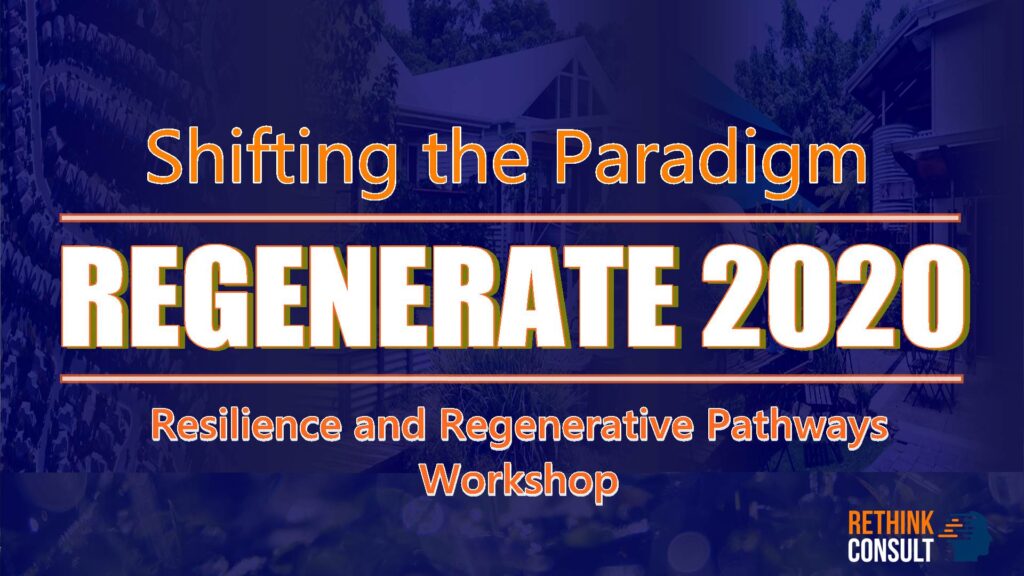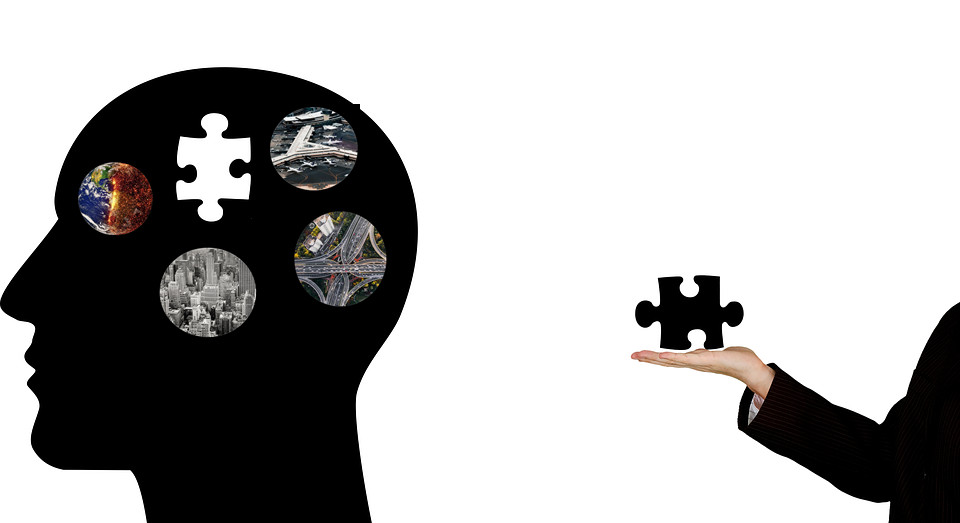
As well as having a climate crisis, we have a crisis of expectations...
Article by: Andrew Martin author of, Rethink... Your World, Your Future and Director of Rethink Consulting
The success of Greta Thunberg has been astronomical in putting the climate debate front of stage throughout the mainstream media, with television, radio and the Internet awash with Greta mania. While there seems to be a rush for a renewable future with an emphasis on solar, wind and a host of other techno fixes, it seems most of the low hanging fruit are being overlooked. When we critically analyse the challenges of climate change and resource use, it becomes obvious the way we engage and interact with our environment is fundamental to the problems we face.
Gradual Changes Eventually Become the Norm
Creeping normalcy is a term used to describe how gradual changes can be accepted as the normal situation if these changes happen slowly, or incrementally. Jared Diamond coined the term 'creeping normalcy' popular in his Pulitzer prize winning book, Collapse – How Societies Choose to Fail or Succeed. Diamond outlines how Politicians use the term ‘creeping normalcy’ to refer to such slow trends concealed within noisy fluctuations. If the economy, schools, traffic congestion, or anything else deteriorate slowly, it's often difficult to recognize the change from previous years. The gradual and incremental changes are difficult to recognise over short periods but can have devastating consequences over a long time horizon.
Air Travel
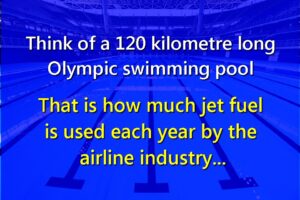 There are many things we take for granted today which we see as normal, yet only decades ago they were uncommon, deemed as frivolous or cost prohibitive. International and domestic air travel has been normalised over the last several decades. According to Smithsonian National Air and Space Museum, in 1930 just 6,000 Americans travelled commercially by airplane. Over the years air travel has grown steadily. In 1950 approximately 10 million people participated in international travel each year, most of which originated from Europe and North America. By the 1970’s the number had grown to 310 million, and by 1990 over 1 billion people travelled by air every year. According to the International Civil Aviation Organization, 2018 saw the total number of passengers travelling by air grow to over 4 billion. The International Air Transport Association (IATA), predicts this will balloon to 7.2 billion passengers travelling annually by 2035—a near doubling of current levels. Most of this boost in traffic will come from the Asia-Pacific region (which includes Asia, Australia, and New Zealand).
There are many things we take for granted today which we see as normal, yet only decades ago they were uncommon, deemed as frivolous or cost prohibitive. International and domestic air travel has been normalised over the last several decades. According to Smithsonian National Air and Space Museum, in 1930 just 6,000 Americans travelled commercially by airplane. Over the years air travel has grown steadily. In 1950 approximately 10 million people participated in international travel each year, most of which originated from Europe and North America. By the 1970’s the number had grown to 310 million, and by 1990 over 1 billion people travelled by air every year. According to the International Civil Aviation Organization, 2018 saw the total number of passengers travelling by air grow to over 4 billion. The International Air Transport Association (IATA), predicts this will balloon to 7.2 billion passengers travelling annually by 2035—a near doubling of current levels. Most of this boost in traffic will come from the Asia-Pacific region (which includes Asia, Australia, and New Zealand).
To put the enormity of this shift into perspective, it is worth looking at a few facts and figures relating to the global aviation industry. Commercial aircraft trips total a staggering 70 billion kilometres each year. It is worth remembering a standard 747 aircraft uses around 12 litres of fuel per kilometre. Imagine if you will, a 120 kilometre long Olympic swimming pool, that’s how much jet fuel the airline industry uses each year.
Automobile Travel
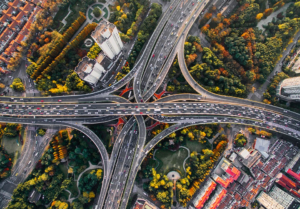 Similarly, the growth and popularity of the automobile has gradually increased since the 1950’s when The Ford Motor Company increased efficiencies enabling mass production, making vehicle ownership affordable to the middle class. In 1960 global vehicle registrations stood at around 130 million vehicles, growing to approximately 411 million vehicles by 1980. By the year 2000 there were approximately 752 million registered vehicles, ten years later this increased to over one billion vehicles. In 2018, over 86 million new cars were sold, bringing the global vehicle fleet to approximately 1.4 billion vehicles. While there has been some growth in the electric car market they constitute significantly less than one percent of the global vehicle fleet. The gradual development and dominance of the car culture over the last several decades has led to the creation of urban sprawl, poor health outcomes, and numerous environmental, social and geopolitical catastrophes. All of these developments have increasingly made our western society less resilient.
Similarly, the growth and popularity of the automobile has gradually increased since the 1950’s when The Ford Motor Company increased efficiencies enabling mass production, making vehicle ownership affordable to the middle class. In 1960 global vehicle registrations stood at around 130 million vehicles, growing to approximately 411 million vehicles by 1980. By the year 2000 there were approximately 752 million registered vehicles, ten years later this increased to over one billion vehicles. In 2018, over 86 million new cars were sold, bringing the global vehicle fleet to approximately 1.4 billion vehicles. While there has been some growth in the electric car market they constitute significantly less than one percent of the global vehicle fleet. The gradual development and dominance of the car culture over the last several decades has led to the creation of urban sprawl, poor health outcomes, and numerous environmental, social and geopolitical catastrophes. All of these developments have increasingly made our western society less resilient.
Supermarket Growth
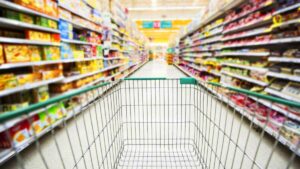 Prior to the early 1900’s large scale supermarkets did not exist. Small local grocery stores stocked basic items while butchers provided meat, the fruit store offered fresh produce and milk was delivered in wagons and or from horse-and-cart. Peddlers trading their specialties roamed neighborhoods selling anything from baked goods to fish or ice. It wasn’t until 1916 in the USA Piggly Wiggly was founded as the first self-service grocery store. This changed the dynamic of grocery shopping, as this model allowed customers to select items themselves. Other store changes such as entrance turnstiles, metal carry baskets, and price tags, allowed customers for the first time to know the price of the goods before buying them, hence streamlining the shopping experience. Since then, the supermarket model has grown and today supermarkets dominate approximately 90% of all retail food purchases. While there are advantages of large scale supermarkets such as, variety of choice, economies of scale, cost efficiencies and longer opening hours, there are associated disadvantages which impact communities.
Prior to the early 1900’s large scale supermarkets did not exist. Small local grocery stores stocked basic items while butchers provided meat, the fruit store offered fresh produce and milk was delivered in wagons and or from horse-and-cart. Peddlers trading their specialties roamed neighborhoods selling anything from baked goods to fish or ice. It wasn’t until 1916 in the USA Piggly Wiggly was founded as the first self-service grocery store. This changed the dynamic of grocery shopping, as this model allowed customers to select items themselves. Other store changes such as entrance turnstiles, metal carry baskets, and price tags, allowed customers for the first time to know the price of the goods before buying them, hence streamlining the shopping experience. Since then, the supermarket model has grown and today supermarkets dominate approximately 90% of all retail food purchases. While there are advantages of large scale supermarkets such as, variety of choice, economies of scale, cost efficiencies and longer opening hours, there are associated disadvantages which impact communities.
This gradual expansion of supermarkets over the last several decades has only been possible with the growth of industrial agriculture and access to cheap energy in the form of crude oil. In 2007, the Centre for Education and Research in Environmental Strategies (CERES), in Melbourne Australia, collected data to establish food miles and greenhouse gas emissions for a typical basket of household items. The study monitored a typical shopping basket of 29 items such as fruit and vegetables, meat and dairy, cereals and legumes and non-core food and beverage items. The total distance travelled for the food basket was 70,803 km, equivalent to travelling nearly twice around the circumference of the Earth (40,072 km). This figure didn’t include the embedded energy of production and other inputs such as fertilisers, pesticides and refrigeration and highlighted the dependency of supermarkets on long distance supply chains.
Local Food Movement
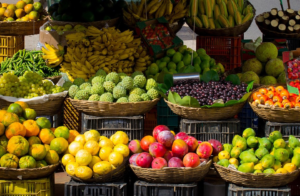 Farmers typically lose out under the supermarket model as they are pressured to produce at scale on a lower margin. Often supermarkets are large listed corporate entities, the profits generated are siphoned to remote investors which reduces the velocity of money within a community. Fortunately the local food movement is gaining traction as people are increasingly aware of the health and community benefits of supporting local growers and farmers. Locally grown seasonal produce is picked at the peak of ripeness and delivered to markets promptly ensuring maximum nutritional value and taste to customers.
Farmers typically lose out under the supermarket model as they are pressured to produce at scale on a lower margin. Often supermarkets are large listed corporate entities, the profits generated are siphoned to remote investors which reduces the velocity of money within a community. Fortunately the local food movement is gaining traction as people are increasingly aware of the health and community benefits of supporting local growers and farmers. Locally grown seasonal produce is picked at the peak of ripeness and delivered to markets promptly ensuring maximum nutritional value and taste to customers.
We have moved from a locally based food system less than 100 years ago, to a globalised industrial system which on the surface seems robust, yet is highly susceptible to a range of vulnerabilities and risks. As David Holmgren suggests in his overview of the current food system, it is the logistics of processing, packaging, storing, wholesaling, retailing, regulating, shopping, preparing and disposing of waste that highlight the central role of the entire food system in environmental impact, resource depletion and systemic vulnerabilities.
The above mentioned shifts in international travel, car ownership and the growth of the global industrial food systems are all a function of cheap energy. To be more specific, crude oil and its derivatives have enabled and powered the global economy, food production and the growth of populations from around 1.6 billion people in the early 1900’s to over 7.7 billion in 2019. All of this has been normalised and has happened gradually over the last 100 or so years.
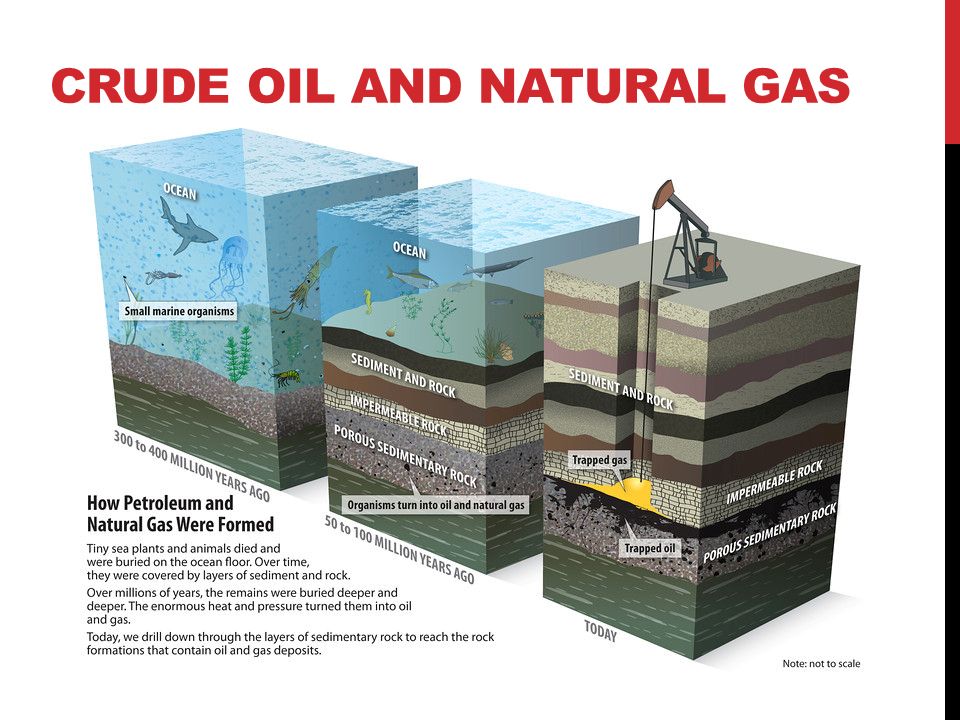
The Embedded Complexity of Oil
It is important to understand the significance of crude oil as it one of the densest and usable forms of energy accessible on the planet. What we now think of as normal is actually a once in millennia occurrence made possible by a series of geological events which occurred millions of years ago. Crude oil formed through a process where tiny plants and animals such as algae and zooplankton which fell to the bottom of the sea and became trapped under multiple layers of sand and mud. Over hundreds of millions of years heat and pressure built to form natural gas and crude oil.
A barrel of crude oil is 42 U.S. gallons, or 158.9873 litres, and contains six gigajoules of energy. This is equivalent to six billion joules, or approximately 1667 kilowatt-hours. In layman’s terms, one barrel of crude oil has the ability to do around 10 years of human labour based on a 40 hour work week. Try getting someone to work for 10 years for the cost of a barrel of oil, which is currently trading at $56.20! Due to its high energy density, ability to be easy transported and relative abundance, oil has been the world’s most important source of energy since the mid-1950s and powers over 90% of all forms of transport.
While there is plenty of debate around eliminating fossil fuels, even the most ardent activist and critics of fossil fuels fail to realise the embedded complexity of oil and it’s by products throughout society. There needs to be more rigorous education and strategic visioning as how we transition to a less energy intensive world. The first step is in understanding the ubiquitous nature of these resources, then making the appropriate behavioural changes to mitigate, eliminate and transition to a less energy intensive society.
A Less Energy Intensive Future
 While some people have made a transition to a less energy intensive future, for the majority, the journey is proving difficult, and or, they believe technology will miraculously save us. This is not helped by a pervasive narrative often promoted by our politicians, the media, and business leaders which promote a business as usual future. The narrative of simply tweaking our energy sources to renewables is dangerous, as it lures society into an unrealistic expectation of the future, hence breeding inaction and apathy. While the cost of renewables is falling, the gradual increases in energy demand and consumption offset many efficiency gains made. The conversation is more complex than simply substituting one form of energy generation and storage for another. Numerous considerations must be factored in when making assumptions, decisions and investments into the future. Understanding energy return on energy invested (EROEI), energy density, transmission loss, intermittency and storage costs and maintenance must be considered. Richard Heinberg, Senior Fellow at The Post Carbon Institute, author of thirteen books on society’s current energy and environmental sustainability crisis, outlines succinctly some of the challenges with a renewable future.
While some people have made a transition to a less energy intensive future, for the majority, the journey is proving difficult, and or, they believe technology will miraculously save us. This is not helped by a pervasive narrative often promoted by our politicians, the media, and business leaders which promote a business as usual future. The narrative of simply tweaking our energy sources to renewables is dangerous, as it lures society into an unrealistic expectation of the future, hence breeding inaction and apathy. While the cost of renewables is falling, the gradual increases in energy demand and consumption offset many efficiency gains made. The conversation is more complex than simply substituting one form of energy generation and storage for another. Numerous considerations must be factored in when making assumptions, decisions and investments into the future. Understanding energy return on energy invested (EROEI), energy density, transmission loss, intermittency and storage costs and maintenance must be considered. Richard Heinberg, Senior Fellow at The Post Carbon Institute, author of thirteen books on society’s current energy and environmental sustainability crisis, outlines succinctly some of the challenges with a renewable future.
“Surveying the available alternative energy sources for criteria such as energy density, environmental impacts, reliance on depleting raw materials, intermittency versus constancy of supply, and the percentage of energy returned on the energy invested in energy production, none currently appears capable of perpetuating this kind of society.”
Making Changes
 Humans are creatures of habit and often find it difficult to change. The slow incremental changes which have occurred over the last several decades have normalised convenience, comfort and luxury. In psychology, reactance is an unpleasant motivational reaction which occurs when humans are faced with the elimination, regulation or are threatened with the potential of someone taking away their choices or limiting their range of alternatives. After having such a powerful resource at our finger tips for the last several decades it will be a hard for some individuals, politicians and business people to let go of these highly addictive substances (coal, oil and natural gas) and the benefits they provide.
Humans are creatures of habit and often find it difficult to change. The slow incremental changes which have occurred over the last several decades have normalised convenience, comfort and luxury. In psychology, reactance is an unpleasant motivational reaction which occurs when humans are faced with the elimination, regulation or are threatened with the potential of someone taking away their choices or limiting their range of alternatives. After having such a powerful resource at our finger tips for the last several decades it will be a hard for some individuals, politicians and business people to let go of these highly addictive substances (coal, oil and natural gas) and the benefits they provide.
Only by understanding the embedded complexity of fossil fuels, the implications and the potential opportunities that may arise from transitioning to a low carbon future can we develop realistic solutions to the challenges we face. Our ever energy hungry civilisation is dependent upon the continual expansion and use of resources to keep the economic system in a state of impossible perpetual growth. Until we come to the realisation that we cannot continue on this treadmill, we will be caught in a never ending cycle of accelerating threats from climate change and social and economic disruptions. The more we chase growth and expand our economies the more vulnerable we become. We must rethink how and what we use energy for and allocate the resources we have available more wisely to building resilient communities and infrastructures for the future.
Rethinking the Future and Building Resilience
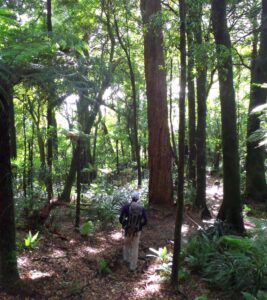
We have overlooked certain aspects of our natural world in favor of material wealth and consumption, such as, clean air, water, wildlife, time spent with family and friends, local communities and connection to each other and the natural world. These provide the basis for life and make it worth living. At this point in time we need to rethink and question everything in order to build resilience. We already have the tools, resources and collective knowledge to facilitate significant change and redesign how we live. At this point in time we face an existential threat, this threat provides humanity with challenges, yet also provides the space for creativity and designing a more robust and resilient model to move into. Humanity has an opportunity to shift the paradigm and build local and regional resilience, to do so, we must question everything and challenge the status quo. From the tools and technology we use, to education and culture, to how we manage health care and well-being, to finance and governance, to community and land tenure. Everything must be challenged, reexamined and questioned critically before blindly heading over the precipice of normalcy, mediocrity and compliance.
Want to position your business, community or organisation as a leader and build resilient and regenerative pathways?
IF THE ANSWER IS YES - THEN CHECK OUT OUR 'SHIFTING THE PARADIGM' - REGENERATE 2020 WORKSHOP TO LEARN MORE CLICK HERE OR THE BANNER BELOW

